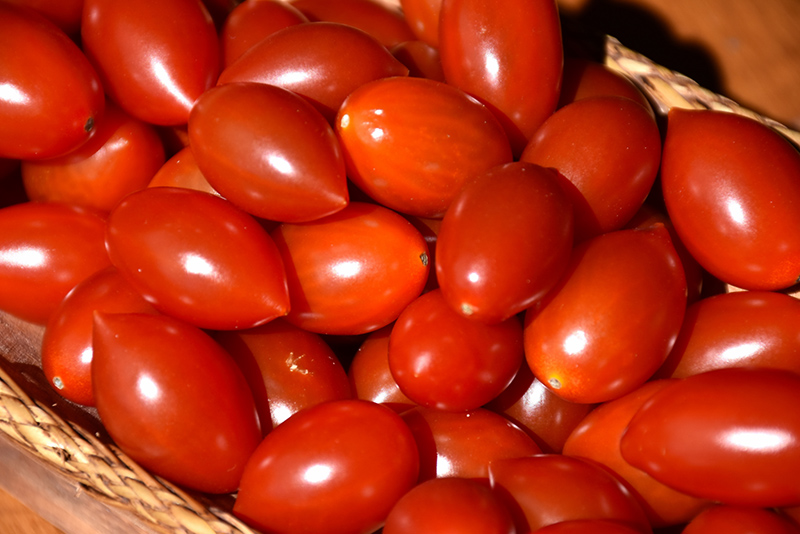Height: 5 feet Spacing: 24 inches
Sunlight:
Hardiness Zone: (annual) Group/Class: Cherry/Grape-Indeterminate Description: A beautiful vining variety, perfect for large containers and gardens; producing bright red fruit all season long; sweet and firm, great for children to snack on, salads, salsas, drying and even sauces; disease and crack resistant; requires staking Edible Qualities Juliet Tomato is an annual vegetable plant that is typically grown for its edible qualities. It produces small clusters of red oblong tomatoes (which are technically 'berries') with red flesh which are usually ready for picking from early to late summer. This is an indeterminate variety, which means it produces fruit throughout the growing season. The tomatoes have a sweet taste and a firm texture. The tomatoes are most often used in the following ways: Planting & Growing Juliet Tomato will grow to be about 5 feet tall at maturity, with a spread of 22 inches. When planted in rows, individual plants should be spaced approximately 24 inches apart. Because of its vigorous growth habit, it may require staking or supplemental support. This fast-growing vegetable plant is an annual, which means that it will grow for one season in your garden and then die after producing a crop. This plant can be difficult to integrate into a landscape or flower garden, and is best grown in a designated vegetable garden. It should only be grown in full sunlight. It does best in average to evenly moist conditions, but will not tolerate standing water. It is not particular as to soil pH, but grows best in rich soils. It is somewhat tolerant of urban pollution. Consider applying a thick mulch around the root zone over the growing season to conserve soil moisture. This is a selected variety of a species not originally from North America. Juliet Tomato is a good choice for the vegetable garden, but it is also well-suited for use in outdoor pots and containers. With its upright habit of growth, it is best suited for use as a 'thriller' in the 'spiller-thriller-filler' container combination; plant it near the center of the pot, surrounded by smaller plants and those that spill over the edges. It is even sizeable enough that it can be grown alone in a suitable container. Note that when growing plants in outdoor containers and baskets, they may require more frequent waterings than they would in the yard or garden.![]()
![]()
![]()
![]()
![]()
![]()
![]()
Characteristics
Applications
Ornamental Features
This guide is an online resource representing many of the varieties that we carry over the course of the season, and is intended for informational purposes only. Inventory varies seasonally, so we cannot guarantee that every plant will be in stock at all times - please contact the store directly for current availability. It does not include our entire selection of plants, so be sure to visit our store to see varieties that may not be represented on this list.


